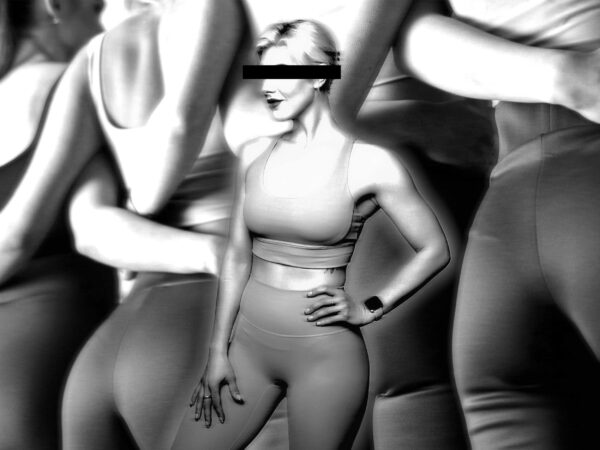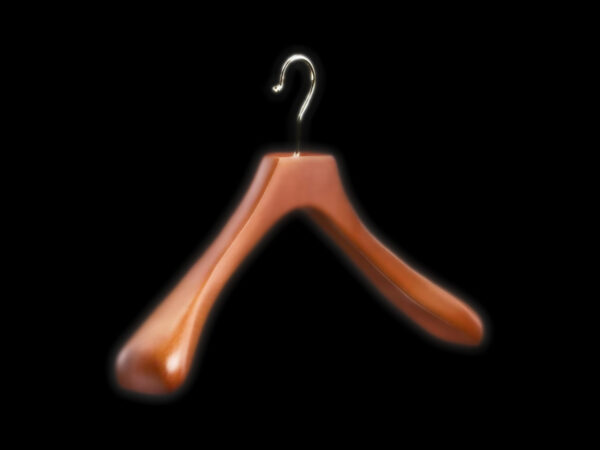In her monthly column for Document, Maya Kotomori remains abreast of lingerie’s history in Valentine’s Day marketing schemes
Once my procedure was booked, I compulsively watched videos of plastic surgeons flaying women’s chests, scraping out the excess, and sewing the skin back up with dissolvable sutures designed to keep results perky and seamless. I watched nipples, to my shock, sliced off, biopsy-punched down to smaller sizes, and stuck back on—like post-its, or clip-on earrings. From the inside out, the breasts looked like blooming flowers, I thought, but still flowers made of glands and fat.
When the anesthesia wore off and I looked down at my shrunken, post-op chest, I felt like I could see past the drainage tubes filled with bloody lymph that poked out of my surgery bra, past the taped-up wounds that resembled areola but were really wet scabs, to a chest that could wear anything: a modest t-shirt bra, a decorative strappy harness, even a lacy demi-cup, if I was feeling frisky.
“With no one to buy me the balconette-garter-thong-stocking combo I’ve been eyeing at La Perla, the heterosexual Valentine’s Day Industrial Complex turns a thing I would normally just buy myself into a slay, as if single women can’t buy themselves something slinky and private the other 365 days of the year.”
Now a fashion writer seven years removed from breast-reduction surgery, I more often find myself imagining what goes on other people’s chests, imagining, not infrequently, who’s the kind of person who walks into an Agent Provocateur store, wondering if any of them have stories like mine. It feels devious to imagine the lingerie customer on Valentine’s Day, given the holiday’s traditional lace, floral, or candy gifts: I imagine a suit buying the same thong in pink and red, one for his mistress, the other for his trophy wife; or a shy, glasses-wearing teen exchanging a sweaty bill for an ornate garter (whether for themself or a gift for a partner is unknown). For me, two things are true this Valentine’s Day: I have been wearing a bra since I was eight years old, and I have never had a boyfriend, let alone someone to buy me lingerie. While the latter part feels kind of sigma and random to mention, it is imperative when considering the sexy gift-giving market of the international day of love. On February 14th, lingerie is something you either receive from someone you’re dating and/or fucking, or you buy yourself on a self-esteem-y, feminist tip. With no one to buy me the balconette-garter-thong-stocking combo I’ve been eyeing at La Perla, the heterosexual Valentine’s Day Industrial Complex turns a thing I would normally just buy myself into a slay, as if single women can’t buy themselves something slinky and private the other 365 days of the year (the math is correct; as my editor points out, it’s a leap year).
To simplify a long, complicated history: we as ladies have gone from wearing bras and other support garments on the outside of our clothes in the 18th century, to wearing them almost shamefully under our clothes in the early 20th century, to wearing them as clothes in the ’80s, to today donning the truly psycho human-sausage-casings Kim Kardashian sells (I own two pairs; they work really well as compression garments). The evolution of lingerie has not just charted the many ways of commodifying sexiness for women, it also spits us out at a critical point I’d like to call the era of the “self-love” product: the strong independent woman panty, the I pay my own bills “waist trainer” (girdle). This Valentine’s Day, I want nothing to do with it!
The marketplace for the modern woman has gone from “sex sells” (or lingerie as something your husband buys you so you can please him) to “you sell sex” (or lingerie as something you buy yourself so you can please yourself). Lee Eisenberg spends an early chapter in Shoptimism breaking down the notion of sex as an impetus for shopping, diving into journalist Vance Packard’s 1957 book The Hidden Persuaders. Packard’s work follows the findings of Ernest Dichter, an oddball social scientist running secret behavioral studies for huge companies like General Mills out of a place he called the Institute for Motivational Research. A practicing psychoanalyst in Vienna, Dichter fled his native Austria before Nazi occupation, eventually setting up shop in a massive house overlooking the Hudson River about 30 minutes outside of New York City. Quickly acclimating to his capitalist surroundings, he spent his first days in the states writing letters to companies telling them that he could maximize their selling power by using his Freudian mastery to better understand consumers. After getting a response from Esquire, Dichter presented “research” that men’s eyes dilate when looking at the semi-nude women the magazine placed between essays and advertisements, deducing that the publication could pitch advertisers greater sales opportunity, as “it pays to advertise in Esquire because they will be appealing to readers whose eyes are more widely open than when they read other publications.” Some of my personal favorite “sex sells” research from Dichter via Eisenberg:
1. “Men favor a crease down their trouser legs because it smacks of an erection’
2. “Women buy lipstick because it’s an antidote to ‘pale blue lips [which] are a sign of old age and death.’ Also, “not only are the lips of the face painted, but also the lips of the vagina”
3. People buy ivory soap because it makes them feel like their scrubbing guilt away (ivory as purity)
4. Got Milk? was such a successful campaign because it appealed to a latent urge for men to breastfeed
The bigger-picture takeaway of Packard’s The Hidden Persuaders is how “research” like Dichter’s serves as a how-to guide for advertisers to more accurately manipulate American consumers. According to Packard, there are eight “compelling needs” products must fill to be able to turn a profit: emotional security, reassurance of worth, ego gratification, creative outlets, love object, a sense of power, roots, and immortality. Returning to the Got Milk? campaign, I think back to an ’80s ad I saw, where a smiling woman holds up a glass of milk wearing a shirt that says “I’m full of natural goodness” right over her boobs. I can’t help but think about how similar this shirt is to Maria Grazia Chiuri’s feminist one: the former invokes an image of sex to sell a beverage, the latter signals a non-sexy political stance on women’s rights to sell a $920 t-shirt.
This may all sound common sense today—but when this research first began infiltrating advertising in the ’50s, it exploded a previous notion of commerce by creating the “branded” product, pre-coded with subliminal messaging to ensure its commercial success. Valentine’s Day branding becomes interesting in today’s marketplace because it can be as motivational for men as it is for single women. The holiday accomplishes all of Packard’s eight “compelling needs” for advertisers, as seen in consumers buying a gift for someone else or for themselves. For the gift-giver, it’s not the holiday, but the act of giving it markets, that in fact motivates them. For the woman buying herself, say, a little present at Agent Provocateur on Valentine’s Day, all eight needs become more powerful. Not only did Agent Provocateur fulfill her emotional security, they promoted a feminist message that you don’t need anyone to buy you lingerie on Valentine’s Day. More than that, Agent Provocateur used the messaging of a couple’s holiday to successfully market expensive underwear to a single woman. Cha-ching.
“Now, lingerie has become a self-esteem product because of its connection to a sexually liberated class of shoppers who initially came about at the turn of the 21st century.”
Lingerie wasn’t always empowering, however. In 18th-century Europe, women would wear their support garments over their clothes, like a corset, stay, bustle, or hoopskirt over a day dress, which was layered over cotton tunics and underskirts for volume. Nightclothes back then were essentially just the first cotton layer of clothing, since women wore their underwear (overwear?) on top. Things changed in the early 19th century, when underwear became, well, underwear. There are several historical causes as to how this happened, but the most important person to know from this time is Mary Phelps Jacobs (aka Caresse Crosby), who invented the modern bra in 1910: two handkerchiefs tied together with a knot, a design that would be patented to her by 1914. The 19th century had had a taste for extreme hourglass shapes but by the ’20s more boyish shapes were in vogue, where looser, shorter clothing meant for looser, more scant nightwear. Lo, we have the wonderful world of slips, nighties, and babydoll chemises.
Uniting the history of “sex sells” and modern lingerie means applying the context of nightwear as pre-sex clothing aimed at arousing a partner onto a market bent on not only selling sex, but creating a desire to buy among prospective consumers. Now, lingerie has become a self-esteem product because of its connection to a sexually liberated class of shoppers who initially came about at the turn of the 21st century. Fashion historian Valerie Steele’s Fetish, a book on the relationship between fashion and fetishism, explores this new consumer category through the role of commodity fetishism. As Steele quotes Walter Benjamin, “Fashion prescribes the ritual by which the fetish commodity wishes to be worshiped,” or in simpler terms, the fetish object is valued as much as fashion allows it. She uses her example of Emma Peel from the ’60s TV series The Avengers, whose skin-tight latex catsuit sold sex as a vehicle for women’s empowerment. In this case, the catsuit becomes the fetish commodity, where the rules of fashion dictate the level of worship it deserves. In this way, lingerie becomes a fetish commodity because it doesn’t just sell sex, it sells sex as a tenet of feminism, a representation of a woman’s autonomy of her body.
My empowerment as a woman came from getting a surgery that eliminated years of back pain—not to mention shame from people avoiding eye contact with me out of the fear of accidentally looking at my ample 12-year-old bosom. It’s strange that going under the knife at 18 opened me to the world of lingerie; in the same way, it still feels weird to me that buying myself a bra on Valentine’s Day means something different than it would on any other day. I don’t spend so much time thinking about being a woman, not because it’s particularly exhausting, but because I don’t care all that much. But, as I’m reminded every year on this day, I am alone, and because I am alone, I am sold to that much harder: heart-shaped sushi and pizza and cake for one, because you’re definitely not a spinster-in-training, you’re a bad bitch who doesn’t need a man. The messaging of my independence is unavoidable, and it is even more suffocating than the former G-cup prison that used to live atop my rib cage. It’s funny—authority figures used to tell me that with the right attitude, I along with my tits could rule the world someday. With about a third of that rack today, I think I could do three times as much damage.



















